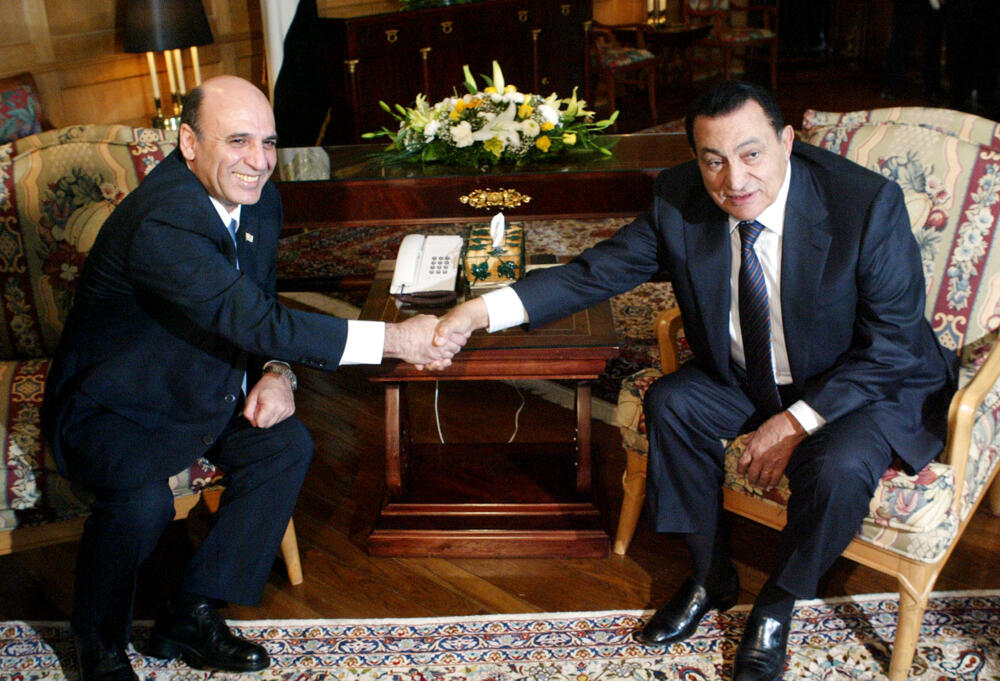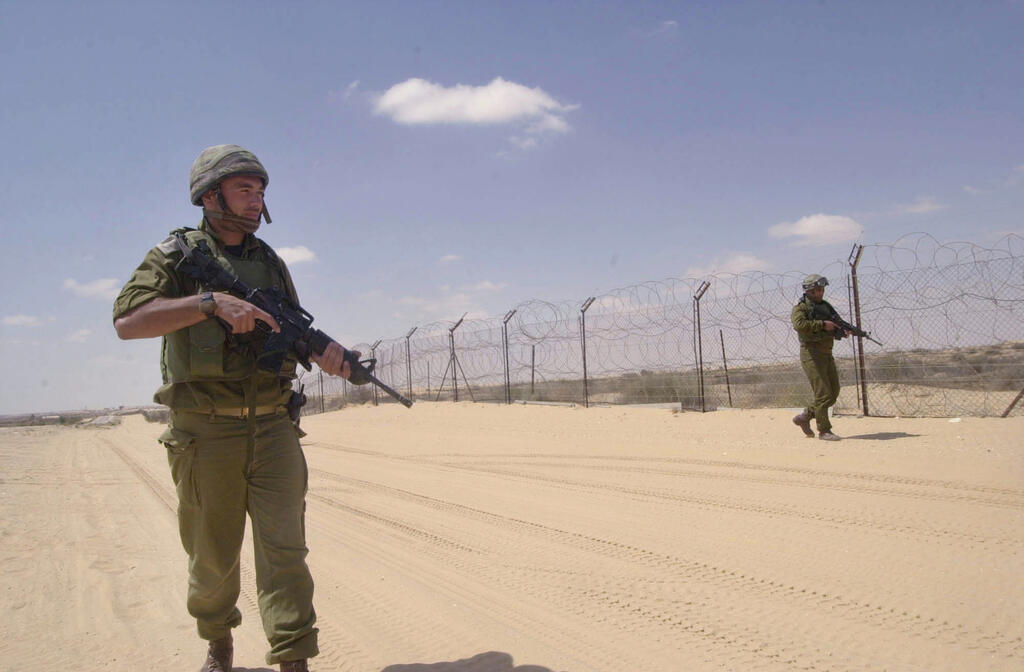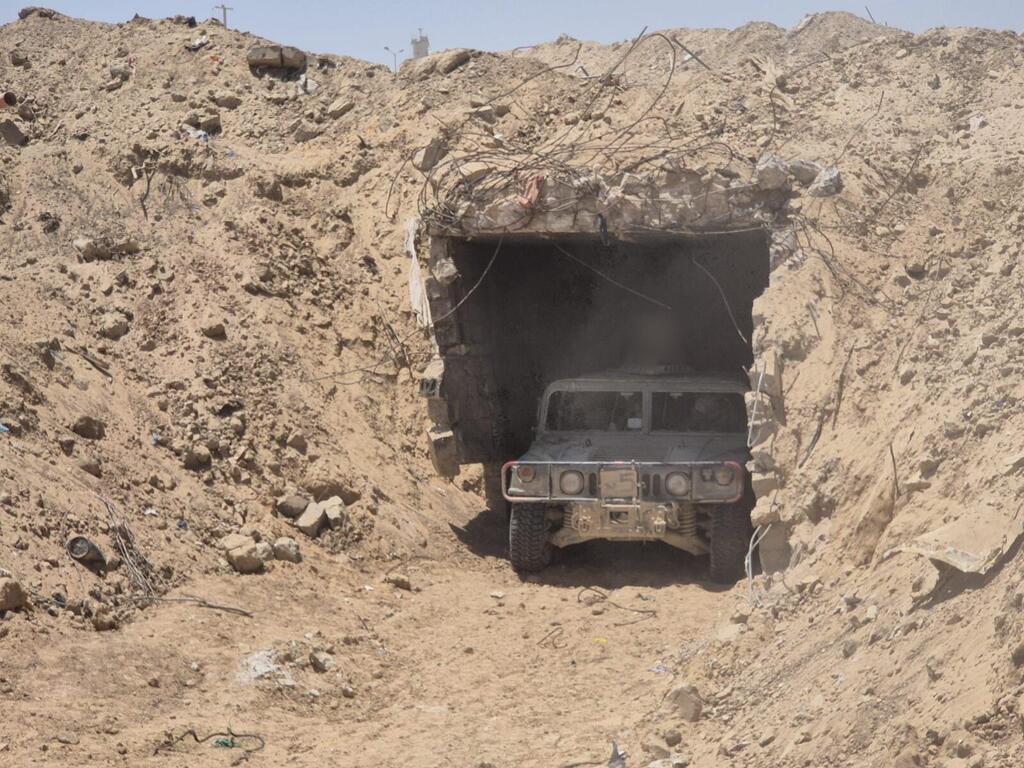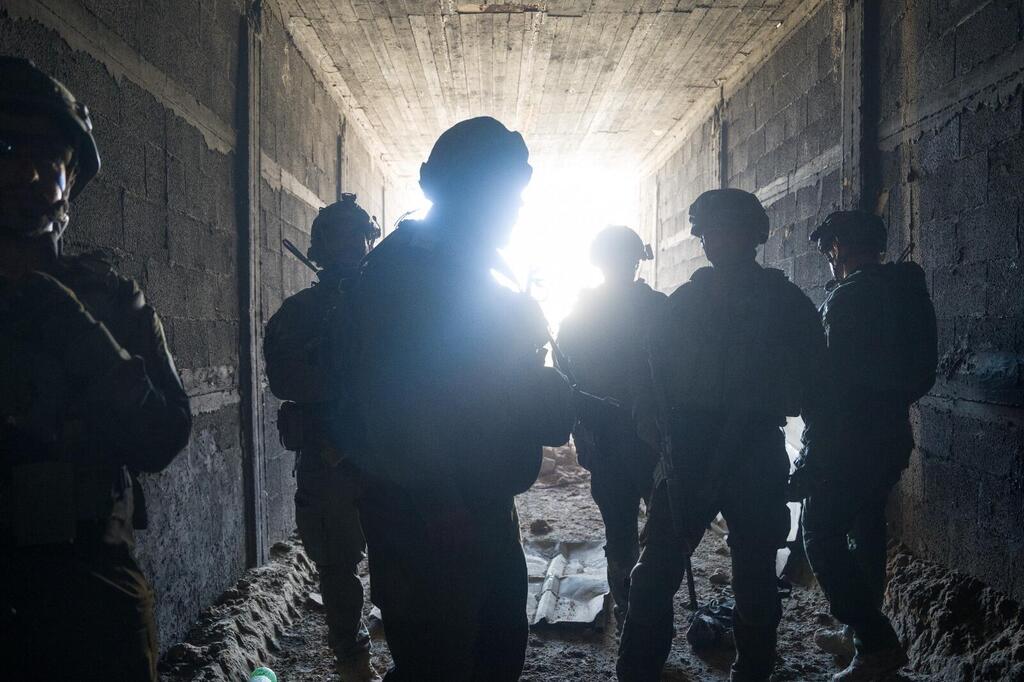Getting your Trinity Audio player ready...
Nearly 20 years ago, a conversation took place between Egyptian President Hosni Mubarak and Israeli Defense Minister Shaul Mofaz that outlined a plan for deploying 750 Egyptian police officers along the Philadelphi Corridor within months to prevent arms smuggling.
The plan also included coordination between Egyptian and Israeli battalion and brigade commanders to thwart smuggling activities. However, this discussion did not occur recently or during the current war in Gaza but rather in March 2005, as part of the preparations for Israel's disengagement plan, which was implemented later that summer.
4 View gallery


Defense Minister Shaul Mofaz and Egyptian President Hosni Mubarak
(Photo: Zvika Tischler)
During the talks, Mubarak made it clear to Mofaz that he expected Israel to withdraw from the Gaza Strip, including the Philadelphi Corridor, and that Egypt would handle security issues in the area. After the conversation, Mofaz noted that the Egyptian activity would also address intelligence against smugglers, their arrests and operations within Sinai, not just at the border. Even then, Egypt refused any Israeli presence along the narrow strip of land stretching the border.
The story of the Philadelphi Corridor spans over four decades of smuggling, broken promises, accusations and indirectly, numerous casualties. This has long been a problem for Israel, as the transfer of weapons, terrorists, infiltrators and goods beneath the border between Gaza and Egypt was a known and frustrating issue long before Hamas took over the Gaza Strip in 2007 and even before the disengagement in 2005.
However, only during the massacre of October 7 and the subsequent war did the extent of its impact on building a terrorist army in the Gaza Strip become evident.
When air strikes were believed sufficient against tunnels
The Philadelphi Corridor is a buffer zone between Egypt and the Gaza Strip, stretching 8.7 miles from the Mediterranean Sea in the west to Kerem Shalom in the east. The Rafah crossing, which splits the city between its Gazan and Egyptian parts, is considered a central point. The route was established in 1982 following the peace treaty between Israel and Egypt, the evacuation of Sinai and the establishment of the new border in southern Gaza.
Even after the Oslo Accords in 1993, Israel continued to control the route until the disengagement, when a change to the military annex of the peace treaty with Egypt was approved. Dubbed the "Philadelphi Accord," this agreement allowed Egypt to deploy 750 armed border guards along the route (the peace treaty had previously limited Egypt's forces there). Egypt was supposed to prevent the smuggling of weapons into the Palestinian Authority territory, a promise that proved largely ineffective over the years.
Only a year after the disengagement, in October 2006, the IDF recognized that the tunnels in southern Gaza had become a serious and central threat. "Terrorist organizations use them to smuggle weapons, thereby arming themselves with sophisticated arms like anti-tank missiles similar to those held by Hezbollah," said a military source at the time.
Reports in the media indicated that Israel was investing "efforts" in uncovering smuggling tunnels along the Philadelphi Corridor and was considering bombing them from the air. Egypt expressed concern about such actions, which could threaten some 20,000 Gazans living near the border. "There are schools, banks and residential buildings that would be at risk if Israel used bombs against the tunnels," an Egyptian source said at the time.
In retrospect, it's hard to ignore the similarities—and perhaps the naivety—in the discussions around the issue. The first defense minister of Prime Minister Ehud Olmert's government, Amir Peretz, said that the IDF did not intend to reoccupy the Gaza Strip but would act to neutralize the tunnel threat.
"If terrorist elements have managed to smuggle dozens of anti-tank missiles these days, we do not intend to wait until they bring in hundreds and thousands," he noted, adding, "We will not turn a blind eye until the smuggling routes in the tunnels become highways."
The IDF chief of staff at the time (and during the disengagement), Dan Halutz, remarked, "It's better for the IDF to be on the corridor than not, but no decision has been made on the matter." Other ministers in the government called for "a return to the Philadelphi Corridor."
The link to ISIS Sinai
The Philadelphi Corridor, which cuts through the city of Rafah, has a long history of human, familial, commercial and other ties severed when Israel withdrew from Sinai in the early 1980s. Beyond terror and weaponry, the tunnels dug beneath the new border also serve significant civilian purposes.
IDF forces enter Rafah crossing
(Video: IDF Spokesperson's Unit)
Ophir Winter, a senior researcher at the Institute for National Security Studies at Tel Aviv University, is well-versed in the history of smuggling under the Philadelphi Route, which has expanded over the years. According to Winter, this smuggling began shortly after Israel's withdrawal from Sinai, about two decades before the 2005 disengagement.
"The tension between Israel and Egypt on the matter intensified after the disengagement in 2005 when the IDF left the corridor and escalated with Hamas' takeover of Gaza in 2007," he explained. "While both countries were opposed to Hamas and its imposed rule in Gaza, their priorities differed."
Winter noted that during Hosni Mubarak's presidency, arms smuggling was seen as more of an Israeli problem than an Egyptian one, leading to a lack of prioritization and resources to combat it. The issue worsened during the Arab Spring.
"During that time, anarchy in Egypt was exploited to smuggle weapons from Libya to Gaza," Winter said. "Egypt's attitude toward smuggling changed only after Mohamed Morsi's presidency ended and Abdel Fattah el-Sisi rose to power, as Gaza became a logistical rear base for ISIS terrorism in Sinai, causing thousands of casualties and posing a major threat to Egypt's national security."
How did Sisi's regime view Hamas' smuggling operation? "The movement was perceived as hostile in Cairo, as it was considered an offshoot of the Muslim Brotherhood and was involved in subversive activities in Egypt. Therefore, in the mid-2010s, increasing efforts were made to combat smuggling, including flooding tunnels and creating a buffer zone on the Egyptian side of the border. Some of these measures were quietly coordinated with Israel. However, in 2017, certain understandings were reached between Egypt and Hamas, leading to a gradual reduction of terrorism in Sinai."
A shared interest for both nations
During the 2014 IDF-led Operation Protective Edge in Gaza, the French news agency AFP reported a figure that seemed unimaginable even today. It stated that under President Sisi's leadership, 13 tunnels connecting the Sinai Peninsula to Gaza were destroyed, bringing the total number of tunnels Egypt demolished to 1,639.
Rocket launch pads uncovered along Philadelphi Corridor
(Video: IDF Spokesperson's Unit)
The report detailed a year of deteriorating relations between Hamas and Cairo since the Egyptian army, led by Sisi, ousted President Morsi. Egypt accused Hamas of involvement in attacks carried out in the country since the fall of the Muslim Brotherhood's rule.
"Since the 2013 ousting of Islamist Mohamed Morsi, Egypt has deployed many forces to Sinai to fight extremists and destroy tunnels used by Hamas to smuggle weapons, food and fuel," the report stated.
In September 2015, it was reported that Egypt was flooding Hamas tunnels. Al Jazeera reported that the army pumped Mediterranean seawater through large pipes to try and drown the smuggling network under the border. Despite these efforts, many significant tunnels remained beneath the border, as demonstrated by IDF operations in recent months.
"Based on information likely gathered by the IDF since October 7, it should be investigated whether, in recent years, the priority given by Egypt to combat arms smuggling along the Philadelphi Corridor has decreased, either underground or above it through border crossings," Winter said. "I hope both sides will work to fix the flaws and close the gaps, understanding that preventing weapons smuggling to Gaza is a shared interest for both nations."
Since the beginning of the war in Gaza, Egypt has warned Israel not to approach the Philadelphi Corridor. In January, Diaa Rashwan, chairman of Egypt's State Information Service, dismissed claims of smuggling into Gaza from Egyptian territory and warned, "Any Israeli action in this direction would pose a severe threat to Israeli-Egyptian relations. Israel's lies about the tunnels are intended to legitimize the occupation of the Philadelphi Corridor against international agreements."
Rashwan insisted that Egypt has destroyed more than 1,500 tunnels and reinforced the border fence with Gaza with a concrete wall. He claimed that the barriers between Sinai and Palestinian Rafah do not allow for smuggling above or below ground. However, recent images released by the IDF of operations in the area and other evidence likely presented to Egypt during cease-fire negotiations in Cairo suggest otherwise.
'An Israeli attempt to escape the failure in Gaza'
For months, the Egyptians have said that any Israeli approach to the corridor would be seen as a violation of the peace treaty, but even after the IDF took control of the Rafah crossing in less than a day in early May, Cairo maintained that the peace treaty remained stable. This stance did not change even when the IDF announced in June that it had achieved full operational control along the corridor and had identified 35 tunnels, some crossing into Egypt.
An Israeli military source told The Washington Post in June that an estimated 20 tunnels in the area remain undetected. The source emphasized that before any IDF operation, contact is made with Egypt to coordinate activities. Just a few days ago, the IDF released footage of a 10-foot-high tunnel capable of accommodating large vehicles, which was discovered last week along the route.
Despite this, Egyptian officials continue to deny the existence of such tunnels. An Egyptian source recently denied "Israeli media reports about tunnels between Egypt and Gaza," describing them as "an Israeli attempt to escape the failure in Gaza." The source added, "Israel's failure to make progress in Gaza leads it to publish claims about the existence of tunnels to justify the continued attacks in the Strip."









